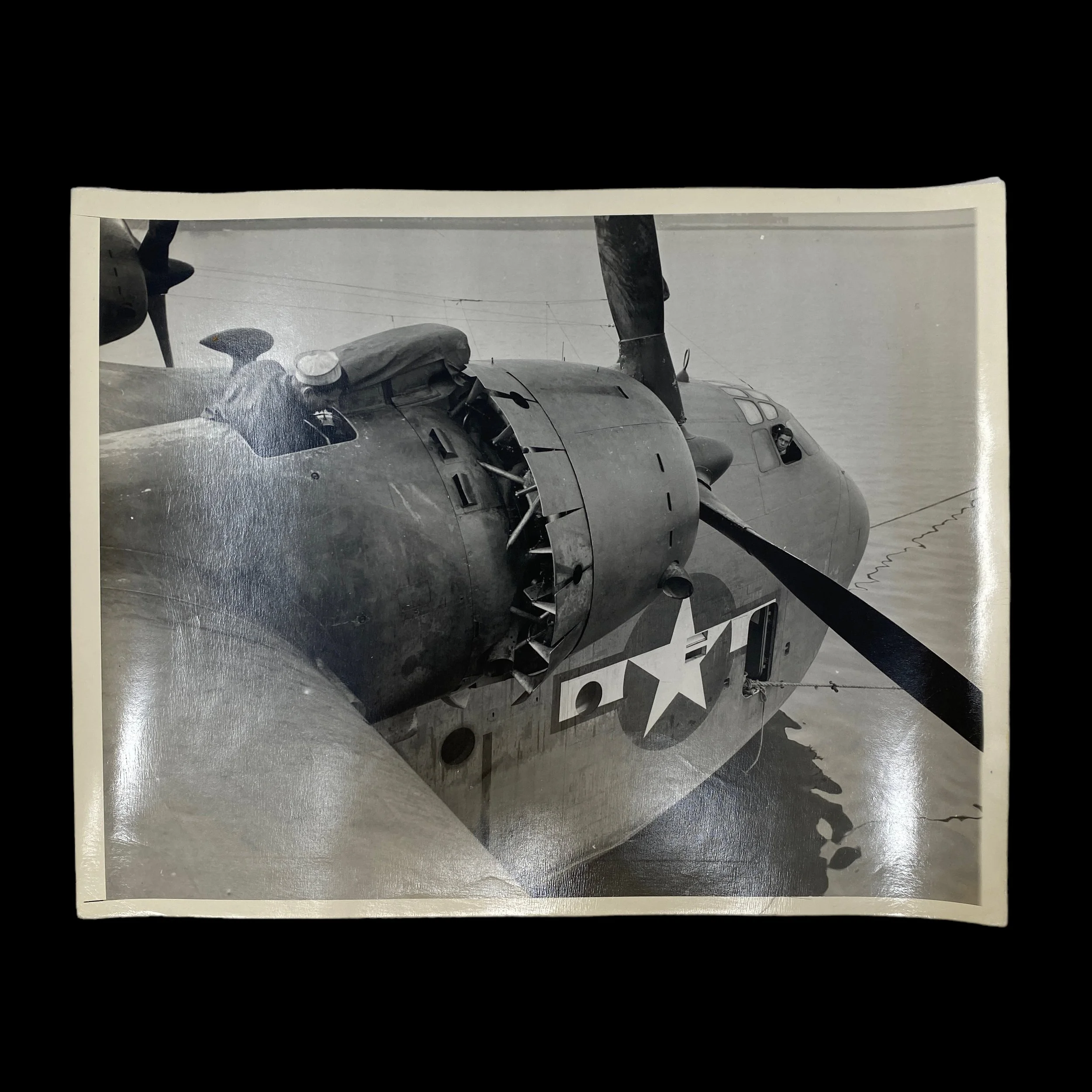WWII "1st Edition" Print Associated Press U.S. Seaplane Photograph






WWII "1st Edition" Print Associated Press U.S. Seaplane Photograph
Comes with C.O.A.
RARE - 1st Edition Pacific Theater combat photograph.
World War II (WWII) stands as one of the most pivotal and devastating conflicts in human history. It reshaped the geopolitical landscape and altered the course of nations. One of the crucial elements in documenting and conveying the realities of this global conflict was the use of combat photography. The 1st Edition Associated Press (AP) combat photos from WWII are particularly significant, as they not only provided a firsthand visual account of the war but also played a crucial role in shaping public perception and understanding of the events unfolding on the frontlines.
The period leading up to and during WWII witnessed a transformation in the field of journalism, with advancements in technology and communication facilitating a more immediate and widespread dissemination of news. The Associated Press, established in 1846, was at the forefront of this evolution. As the war unfolded, the AP deployed photojournalists to document the events, using cutting-edge equipment for the time.
Photographs have an unparalleled ability to convey the emotional impact and stark realities of war. The 1st Edition AP combat photos during WWII served as a powerful means of communication, offering the public a visceral connection to the frontlines. These images captured the chaos, bravery, and devastation of war in a way that words alone often struggled to convey. From the beaches of Normandy to the Pacific islands, these photos transported viewers to the heart of the conflict, allowing them to witness the war's toll on both soldiers and civilians.
The 1st Edition AP combat photos from WWII were characterized by their authenticity and rawness. Unlike staged or manipulated images, these photographs provided an unfiltered glimpse into the harsh realities of warfare. The photographers faced immense risks to capture these moments, often putting themselves in harm's way to bring back images that would stand as historical documents. This commitment to truth-telling enhanced the credibility of the AP and its photojournalists, solidifying their reputation as reliable chroniclers of the war.
These combat photos played a crucial role in shaping public opinion and garnering support for the war effort. As newspapers and magazines across the world featured these images, they became a powerful tool for governments to convey the necessity of the war and the sacrifices being made. The emotional impact of seeing soldiers storming the beaches of Normandy or the stoic faces of prisoners of war resonated with the public, fostering a sense of unity and resolve.
The legacy of the 1st Edition AP combat photos from WWII extends far beyond the war itself. These images have become iconic representations of a pivotal moment in human history. They have been reproduced in countless history books, documentaries, and exhibitions, ensuring that future generations have access to a visual record of the sacrifices and heroism of those who lived through WWII. The power of these images also influenced the development of photojournalism as a respected and impactful form of storytelling.
The 1st Edition Associated Press combat photos during WWII stand as a testament to the enduring power of visual storytelling. In a time when the world was gripped by the chaos and destruction of war, these photographs provided a window into the human experience on the frontlines. They captured the essence of bravery, sacrifice, and resilience, shaping public perception and leaving an indelible mark on the historical narrative of World War II. The legacy of these images continues to remind us of the human cost of conflict and the importance of bearing witness to the events that shape our world